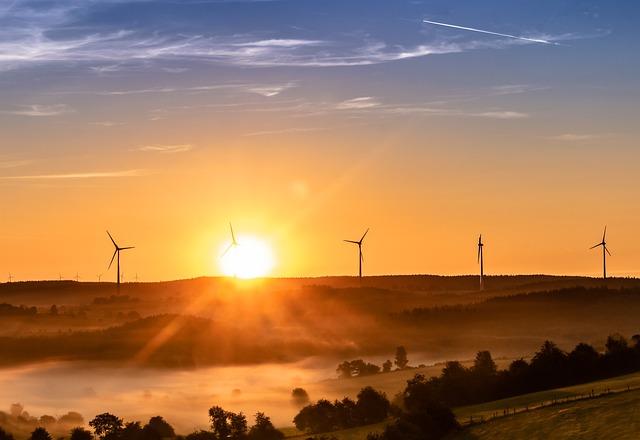
## H1: Unlocking a Sustainable Future: A Deep Dive into Renewable Energy Trends Reshaping the Utilities Sector
H2: Introduction
The utility sector is experiencing an unprecedented transformation, driven by a phenomenon that has been quietly gaining traction for decades: renewable energy. The old paradigm of fossil fuels dictating the energy market has been progressively eroded by technological advancements and shifts in public preference towards cleaner energy sources. This article aims to provide an insight into the key trends shaping this transformation, and how they are driving the utilities sector towards a more sustainable future.
H2: The Wind of Change: Renewable Energy Trends
Renewable energy, derived from natural resources such as sunlight and wind, offers an infinite supply of power with zero greenhouse gas emissions during operation, making it a viable alternative to fossil fuels. Embracing renewable energy is considered a pivotal step along the path to a sustainable future. Here are the key renewable energy trends that are reshaping the utilities sector today:
H3: Increase in Solar and Wind Energy
While hydroelectricity has dominated the renewable field for decades, in recent years wind and solar energy have risen to prominence. Dropping costs, new technologies, and government incentives have all contributed to this rapid growth.
H3: Smart Grids and Energy Storage
To avoid energy waste and maximize the use of renewables, industries are moving towards the use of smart grids. These enable real-time monitoring and control over power distribution, heightening efficiency. Meanwhile, advancements in energy storage solutions are ensuring that surplus power can be conserved to handle fluctuations in energy supply.
H3: Decentralized Power Generation
Microgrids, or decentralized energy systems, are becoming increasingly popular. These systems allow businesses and households to generate their own energy and sell the excess back to the grid.
H3: Rise in Electric Vehicles (EV)
The rising popularity of electric vehicles is directly impacting the demand for electricity. This is triggering the utilities sector to cater to this new need while also exploring smart charging technologies that assist in balancing the grid load.
H2: How Renewable Energy is Reshaping the Utilities Sector
Let’s delve deeper into the effects these trends are having on the utilities sector.
H3: Lower Energy Prices
Increased competition through renewable energy has led to reduced electricity prices, proving beneficial for consumers and businesses.
H3: More Job Opportunities
The rise in renewable energy projects is creating a wealth of job opportunities in various fields including engineering, construction, project management and power system operation.
H3: Holistic Energy Solutions
The transition towards using renewables has also led utilities to think beyond their traditional role as energy suppliers and prompted them to provide end-to-end energy solutions to consumers.
H3: Influence on Regulations
Increased adoption of renewable energy has instigated policy changes at both national and international levels. This has further propelled the growth of this sector.
H2: The Roadmap to a Sustainable Future
Embracing renewable energy is consequential for more than our immediate environment and economy. It’s a move towards a more sustainable future where energy is cleaner, more efficient and affordable for all. Several factors are shaping this roadmap:
H3: Government Policies and Initiatives
Government policy serves as one of the most influential tools for ushering in a renewable energy future. Policies such as feed-in tariffs, renewable purchase obligations, and tax incentives can significantly drive the uptake of renewable energy technologies.
H3: Technological Advancements
Technological progress will continue to improve the efficiency of renewable energy systems and reduce costs, making it more competitive with traditional fuels.
H3: Changing Consumer Attitudes
A shift in consumer sentiment toward sustainability and energy conservation can significantly steer the transition to renewables and drive demand for green energy solutions.
H2: Conclusion
The metamorphosis of the utilities sector, driven by renewable energy trends, is a decisive stride towards a more sustainable future. With rising consumer consciousness, technological innovation, and supportive government policies, the sector is set to continue transforming. This deep dive reveals the importance of our collective effort in adopting and favoring renewable energy – for cleaner air, healthier lives, and a thriving planet.
Though challenges lie ahead, the fundamental truth remains: Renewable energy is not merely an option but an imperative for a sustainable future.

Leave a Reply